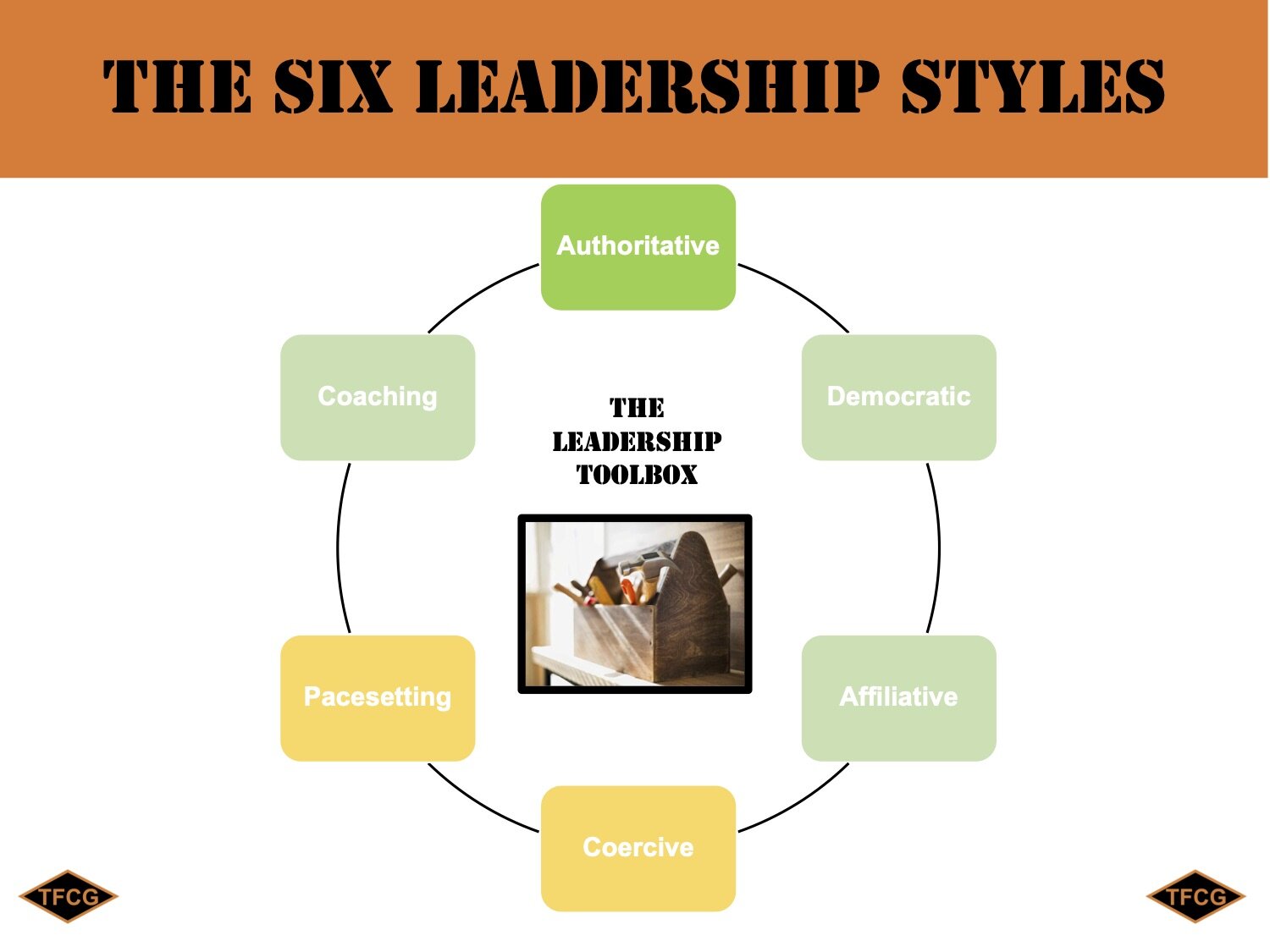The 6 Leadership Styles (#76)
Daniel Goleman is an author and science journalist who has written extensively about the brain and behavior. After surveying 3,000 executives, he found that there are six leadership styles that leaders use. These leadership styles aren’t personality traits, rather they are leadership tools. Think of them as tools in your leadership toolbox. The six leadership styles are authoritative, coaching, affiliate, democratic, pacesetting, and commanding.
The Six Leadership Styles
His research also found that leaders that master four or more styles have the best business performance. According to Goleman, the most useful leadership styles to have in your toolbox are the authoritative, democratic, affiliative, and coaching styles. If you’d like to read more, he has a great article in HBR. Click here.
The six leadership styles are:
Authoritative — mobilizes people toward a vision. This style works best when a clear direction or change is needed and is epitomized by the phrase “come with me. ” It helps to create a positive climate.
Coaching — develops people for the future. This style works best when helping people and building long-term strength. It is represented by the phrase “try this.” It is part of building a positive climate.
Affiliative — creates emotional bonds and harmony. This style works best to heal rifts in teams or motivate people in stressful times. It is epitomized by the phrase “people come first.” It helps craft a positive climate.
Democratic — builds consensus through participation. This style works best to create consensus or get input and is embodied by the phrase “what do you think?” It helps create a positive climate.
Pacesetting — expects excellence and self-direction. This style works best to get quick results from a highly competent team and is captured in the phrase “Do as I do, now.” It can create a negative climate
Commanding — demands immediate compliance. This style works best in crisis or with problematic people. “Do what I tell you to do.” It can contribute to a negative climate.
To continue the toolbox analogy — just like when you are doing home improvements, a leader needs to identify if the group needs you to use some oil, needs a hammer, or maybe needs more of a screwdriver to get the job done effectively and efficiently.
Four questions to think about a leader. What leadership style do you currently use with different groups you work with? What is your default leadership style? What leadership style could you add to your toolbox? Finally, if a group isn’t performing as well as they could, might there be a different leadership style you could use to produce better results?
What tools are in your leadership toolbox?
Conclusion
If you’d like more ideas on how to improve your leadership take a look at Chapter 17 in my book, Grow Your Grit, available for sale at Amazon. Or reach out to me here to start the discussion about how to use these lessons and others to help improve yourself or your team’s leadership or grit.
Go on the offense in 2021 and add a new leadership style to your leadership toolbox.



